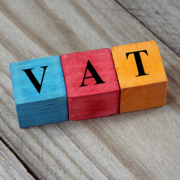Exit Strategy: How to Pass your Business on to the Next Generation

Passing on your business and developing your exit strategy is one of the most important business decisions you will ever have to make.
Many of the tax reliefs one may wish to claim on a transfer of assets can be subject to very stringent conditions, such as minimum periods of ownership or active involvement in the business. Succession planning can often seem like something which should be considered close to retirement. However, the risk of waiting is that many of the key tax reliefs available to business owners are not accessible when the time comes to pass on assets, as the relevant conditions cannot be met.
What can help avoid this problem is advance planning. Through preparation, a business owner can identify some of the key conditions required to avail of certain tax reliefs, allowing them sufficient time to take the necessary steps to qualify for these reliefs. Therefore, it is not unusual to see a succession plan being put in place 5 to 10 years prior to its implementation.
The transfer of a business can trigger several taxes such as:
- Capital Gains Tax (CGT) which is a tax payable by the person selling or transferring an asset. The current rate of CGT is 33%.
- Capital Acquisitions Tax (CAT) which is a tax payable by the person in receipt of a gift or inheritance. The current rate of CAT is 33%.
This article will focus on the key tax reliefs available to business owners and their family members on the transfer of their business.
CGT Reliefs
In order to mitigate or eliminate the CGT liability on the transfer, there are two main reliefs which may be availed of provided certain conditions are met. These are:
- Retirement Relief
- Entrepreneur Relief
Retirement relief provides for relief from CGT on the disposal of qualifying assets.
To qualify for this relief, the main conditions are that the individual must be aged 55 or over and must be disposing of or transferring qualifying business assets. In addition, the individual must have been a working director of the company for 10 years and a fulltime working director for at least 5 of the years prior to the transfer. The latter condition can be a stumbling block for many individuals seeking to claim this relief. For example, an individual may be a director of more than one company and therefore may not meet the full-time working director requirement. This is why it is so important to prepare a succession plan early in your lifetime.
If retirement relief is not available, the individual may qualify for Revised Entrepreneur Relief which limits the rate of CGT to 10% on the first €1m of gains on the disposal of certain business assets. In contrast to retirement relief, this relief has no age requirement and the individual can qualify for it at any stage provided the relevant criteria is met. To qualify for the relief, the individual should have owned the shares in the business for a continuous period of 3 of the last 5 years and spent 50% or more of their working time as an employee or director of the company.
CAT Reliefs
An individual can receive gifts/inheritances up to a certain amount tax-free throughout their lifetime. Currently, a child can receive a gift or an inheritance up to €335K from his/her parents.
In the context of a business, a child may, on receipt of a relevant business property, qualify for what’s known as Business Relief. This reduces the value of the gift or inheritance being received to 10% of the market value of the business property, resulting in a significant tax saving. Similar to the reliefs already discussed, there are certain conditions that need to be met around ownership and the level of involvement in the business.
Farmers may qualify for Agricultural Relief on the receipt of a gift or inheritance of agricultural property. Agricultural property includes agricultural land, crops and trees growing thereon and farm buildings appropriate to the property. By qualifying for this relief, the market value of the property being received will be reduced by 90%. This makes it a very valuable relief.
There are two tests that need to be passed before a person can avail of the relief:
- The farmer test requires 80% of the beneficiary’s assets to be agricultural property immediately after receipt of the inheritance.
- The trading test requires the individual to farm the land themselves for at least 6 years or alternatively lease the land out to a qualifying farmer for 6 years.
If a CAT liability arises with or without claiming any of the CAT reliefs, it may be possible to reduce or eliminate the liability by claiming a credit for the CGT paid by the parent on the transfer of property.
Although there are many commercial considerations to be made when passing on wealth as well as discussions with family members as to suitable successors, tax plays a key role in informing the business owner as to the extent of any tax liability. Knowing this information prior to implementing a succession plan enables the owner to make more informed decisions and allows for maximising the amount of reliefs that may be claimed. This will reduce the overall tax costs of the transfer.
For more information on tax reliefs related to your exit strategy, please contact us.








